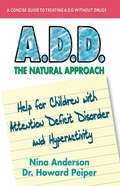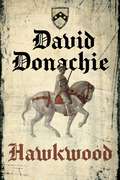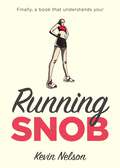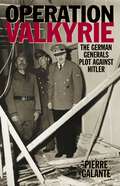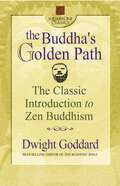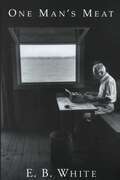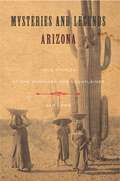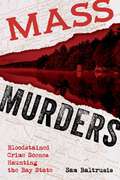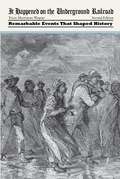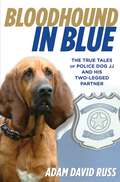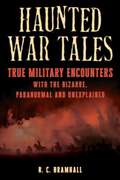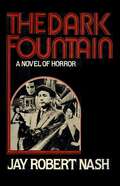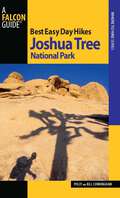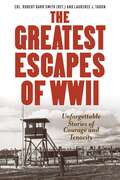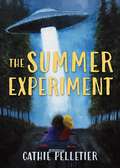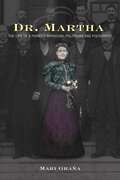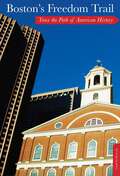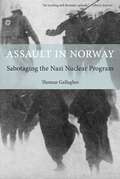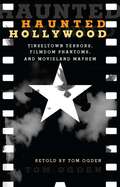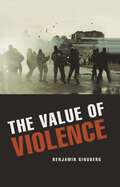- Table View
- List View
A.D.D. The Natural Approach
by Nina Anderson Howard PeiperChildren with ADD are given powerful drugs to cope with their condition, but the drugs often have dangerous side effects. Without medication, though, how can these children be helped? In their new book, Nina Anderson and Dr. Howard Peiper provide a creative solution for ADD. The authors first explain how ADD is triggered by a central nervous system imbalance, and then offer a variety of natural therapies, including proper nutrition. A unique chapter addresses the treatment of related ailments such as fatigue and depression.
Hawkwood
by David DonachieFourteenth-century Italy: The Hundred Years' War is over, and the country is in upheaval as desperate cities struggle against both each other and venal Papal rule. Unable to rely on their own citizens to fight their battles, the cities and popes are forced to pay vast amounts of money to mercenary forces to fight on their behalf.Newly knighted Sir John Hawkwood is headed for France to make his fortune. A valiant Englishman, shrewd and relentless on the battlefield, he soon finds himself fighting for and against any state of Italy prepared to pay handsomely. If none will pay, he and the White Company brutally seize what they desire. It is a world of massacre and pillage in which life is less than cheap and no one can be trusted. To survive, a man has to be quick-thinking, fleet of foot, and strong in his sword arm . . . and Hawkwood is such a man.
Running Snob
by Kevin NelsonA book for runners, marathoners, and joggers!Runners will enjoy this fun and lighthearted look at running enthusiasts who, of course, resemble them in many ways. This is both a send-up of runners and an affirmation of certain aspects of the running life. While laughing at this satire of the habits, attitudes and lifestyle of runners, they are laughing at themselves and also getting solid advice and tips on the activity they love. It includes chapters on:The Community of RunningThe Runner's LifeChasing the Dreamand more!
Operation Valkyrie: The German Generals' Plot Against Hitler
by Pierre GalanteThe bomb that exploded in the "Wolf's Lair"—Hitler's command headquarters—on July 20th, 1944 was the closest any assassination attempt ever came to ridding the world of the Nazis' Führer. Pierre Galante's account of the years that led up to the attempt, and its grim aftermath, offers an illuminating look at how dissent among the German officer corps grew until something had to be done. Conspirator General Adolf Heusinger, who met with Hitler on hundreds of occasions, provides his personal accounts of the disintegrating obedience of the German commanders as the war turned against them. Their plan to kill Hitler, establish a provisional government, and negotiate with the Allies for peace—known as Operation Valkyrie—is described here in depth.
The Buddha's Golden Path: The Classic Introduction to Zen Buddhism
by Dwight GoddardIn 1929, when author Dwight Goddard wrote The Buddha&’s Golden Path, he was breaking ground. No American before him had lived the life of a Zen Buddhist monk, and then set out to share what he had learned with his countrymen. The Buddha&’s Golden Path is a true classic. It has touched countless lives, and opened the door for future generations in this country to study and embrace the principles of Zen.
One Man's Meat
by E. B. WhiteToo personal for an almanac, too sophisticated for a domestic history, and too funny and self-doubting for a literary journal, One Man's Meat can best be described as a primer of a countryman's lessons a timeless recounting of experience that will never go out of style.
Mysteries and Legends of Arizona: True Stories Of The Unsolved And Unexplained (Myths and Mysteries Series)
by Sam LoweMysteries and Legends of Arizona explores unusual phenomena, strange events, and mysteries in Arizona’s history. Each episode included in the book is a story unto itself, and the tone and style of the book is lively and easy to read for a general audience interested in Arizona history.
Mass Murders: Bloodstained Crime Scenes Haunting the Bay State
by Sam BaltrusisDoes a murder psychically imprint itself on a blood-stained crime scene? Sam Baltrusisrevisits the haunts associated with the most horrific homicides in Massachusetts, including the Lady of the Dunes mystery in Provincetown to the Lizzie Borden case in Fall River. Using a paranormal lens, Baltrusis delves into the ghastly tales of murder and madness to uncover the truth behind some of the Bay State's most bone-chilling crimes.
Be Iron Fit: Time-Efficient Training Secrets for Ultimate Fitness
by Don Fink&“Most how-to books are too technical or too shallow. Don Fink manages to pen a unique combination of information, anecdotes, and readability.&”—Scott Tinley, two-time Ironman World Champion&“Don&’s book certainly made me think. A truly complete book for all abilities in the sport of triathlon that leaves no subject untouched.&”—Spencer Smith, three-time Triathlon World Champion Ever dream of being an elite endurance athlete and competing in races like Hawaii&’s Ironman? Pro athletes are not the only people who can attain such superior accomplishments. Every season tens of thousands of amateur triathletes compete head-to-head, pushing their physical and mental strength to the limits. The Ironman competition is a true test: a 2.4-mile open-water swim followed by a 112-mile bike leg and a 26.2-mile marathon run. In Be Iron Fit, sought-after multisport coach Don Fink draws on his time-efficient training methods to provide a practical program in a step-by-step, enjoyable way—so even everyday athletes can attain ultimate conditioning.
Insiders' Guide® to Miami (Insiders' Guide Series)
by Dara BramsonA first edition, Insiders' Guide to Miami is the essential source for in-depth travel and relocation information to Florida's top tropical destination. Written by a local (and true insider), this guide offers a personal and practical perspective of Miami and its surrounding environs.
It Happened on the Underground Railroad: Remarkable Events that Shaped History (It Happened in America)
by Tricia Martineau WagnerFrom a riverboat worker who dressed as a woman to the abolitionist who died for his beliefs, It Happened on the Underground Railroad offers a gripping look at heroic individuals who became a part of the famous &“road&” to freedom. Read about Peter Still, a former slave who came to the Philadelphia Antislavery Society in search of his family, only to discover that the man sitting in front of him was his brother. Meet the individuals who may have inspired characters in the novels Uncle Tom&’s Cabin and Beloved. Andexperience the heart-pounding fear of a man who mailed himself north.
Bloodhound in Blue: The True Tales of Police Dog JJ and His Two-Legged Partner
by Adam RussHe was born in rural Missouri, and it was immediately clear that he was different from the rest. He caught his first criminal when he was just two years old. By his sixth birthday, he had located burglars, missing children, drug dealers, rapists, and murderers—including Utah’s most wanted criminal. Known to friends as JJ, to law enforcement as Michael Serio’s partner, and to captured criminals as “that damned dog,” Jessie Jr., an exceptionally talented bloodhound, bayed like a sea lion that had swallowed a fog horn.Before JJ, few police departments in the West used bloodhounds, and none in Utah. But just when JJ was finally convincing naysayers, he and Officer Serio ran into something worse than resistance: the despair of failure amid high hope. JJ had been tracking Brian David Mitchell, the man who abducted Elizabeth Smart, when he was pulled off the track. Elizabeth later told investigators that on the day she was kidnapped she heard a dog baying in the woods behind her.In almost nine years of service, JJ helped apprehend nearly 300 criminal suspects in the Salt Lake City area. Here is his remarkable story, fleas and all. Click here to view the trailer for Bloodhound in Blue.
Haunted War Tales: True Military Encounters with the Bizarre, Paranormal, and Unexplained
by R.C. BramhallSome battlefields – such as Gettysburg - are known to be haunted. This book focuses on multiple tales of truly odd, and often bizarre, paranormal events on the battlefields of the world. Some popular stories are de-bunked, but most of these reports - all documented in one place for the first time in this engaging and informative collection - are not easily explained and remain a mystery to be pondered, becoming modern canon in the centuries-long history of strange and unusual war stories.
The Dark Fountain: A Novel of Horror
by Jay Robert NashBible-toting Earle Leonard Nelson fancied himself a man of mission. The Lamb of God, in fact, divinely empowered to cleanse the world of sin. But the priesthood that carried him across the country from San Francisco to Buffalo and ultimately into Canada during the 1920s assumed grisly proportions—the brutal strangling and violation of twenty-two helpless and unsuspecting women. Landladies mostly, but each, in Nelson's deranged mind, an incarnation of the Bibilical harlots he both loathed and coveted.Earle Leonard Nelson actually lived. And killed. In The Dark Fountain, famed crime historian Jay Robert Nash tells how and why with chilling realism.Beginning with Nelson's sadistic marriage to a frightened San Francisco schoolteacher, Nash's fictionalized chronicle traces the path of Nelson's bloodlust to its riveting conclusion. His story illuminates not only the dark drives that compel the psychopath to slaughter, but also their effect on a relatively innocent America. While speakeasies, flappers and floozies were staples of the Jazz Age, mass murder was not, and Nelson's rampage shocked and confused an entire nation.Nash captures this sense of national outrage in his vivid portrait of Sergeant John Davis, the detective who stalks Nelson with an obsessiveness equal to that of his prey. Infuriated by Nelson's uncanny ability to escape apprehension, Davis also suffers from the impotence of the outmoded investigative techniques characteristic of the period which Nash describes in fascinating detail.The Dark Fountain completely displays the touch of a master storyteller. Whether mapping the terrible geography of Nelson's disordered mind or the progress of his murderous odyssey, Jay Robert Nash expertly blends horror, suspense and the bizarre to create an atmosphere both repellent and unbearably intriguing.
Endangered Species (Mariners Library Fiction Classic)
by Richard WoodmanCaptain John Mackinnon and his ship, the Matthew Flinders, are embarking on their last voyage. Both endangered species, they symbolize the irreversible, quiet decline of the British merchant fleet. But this journey to Hong Kong will prove to be anything but quiet. Internal tensions among the crew provoke unrest and lead to a navigation error, steering them right into the violent, destructive path of Typhoon David. Suddenly the crew of the Matthew Flinders are no longer fighting for their livelihood, but for their very lives.Yet on the same sears, other lives are at stake as well. When Mackinnon feels compelled to rescue a boatload of Vietnamese refugees fleeing to Hong Kong, he sets off an explosive chain of events that will lead to mutiny, confrontation with Hong Kong authorities, and the greatest challenge of his career.
Best Easy Day Hikes Joshua Tree National Park (Best Easy Day Hikes Series)
by Bill Cunningham Polly CunninghamBest Easy Day Hikes Joshua Tree National Park includes detailed maps and concise descriptions for twenty easy-to-follow hikes in a wild open space close to Los Angeles that offers cool oases, fascinating historic sites and nature trails, and spectacular views for casual hikers of all ages. From the High View Nature Trail to Silver Bell Mine, you will discover some of the best desert hiking California has to offer. Look inside for:Half-hour strolls to half-day adventuresHikes for everyone, including familiesMile-by-mile directions and clear trail mapsTrail Finder for best hikes for birds, views, history, and mining sitesGPS coordinates
Greatest Escapes of World War II
by Laurence J. Yadon Col. Robert Barr SmithThroughout WWII, thousands of Allied prisoners dreamed of outwitting their captors and returning to war against the Axis. Their ingenuity knew no bounds: they went over the barbed wire surrounding them and under it as well; they built tunnels of enormous length and complexity, often working with only their bare hands. They concealed themselves in their captors&’ vehicles and hitched rides to freedom. They became world-class forgers and tailors; they stole anything that might be useful to their escapes that wasn&’t actually red-hot or nailed down.Some of them made it to freedom; some did not. Many of those who failed simply tried again and again until they succeeded. Some of the escapers who were caught were murdered by the Japanese or the German Gestapo. That did not stop others from risking torture or death to gain their freedom. Many men whose break was initially successful would not have survived save for the dangerous, selfless help of civilians, especially in occupied Europe and the Philippine Islands.The stories in The Greatest Escapes of WWII highlight the courage, endurance, and ingenuity of Allied prisoners, chronicling their ceaseless efforts and the alarm that spread far and wide when one or more escaped. These escapes tied up thousands of Axis soldiers who might otherwise have prolonged the war for many more bloody months. The troops committed to guard the Allied prisoners and recapture escapers numbered in the hundreds of thousands.
Summer Experiment
by Cathie PelletierRoberta McKinnon, age 11, is a science nerd and big dreamer. She likes to add to this resume, &“And guess what? I'm blonde!&” She and her best friend, Marilee Evans, are trying to figure out how to beat the impossibly brilliant Henry Horton Harris Helmsby---the 4 Hs of the Apocalypse---at the upcoming science fair. Allagash, Maine, their little hometown, is famous for something called &“The Allagash Abductions,&” when four men from Vermont claimed to have been taken aboard a spaceship while on a trip down the Allagash River. Robbie McKinnon puts her brain to work and comes up with a solution. &“If aliens visited Allagash before, they might again. What if we try to contact them? If we interview them for the school paper, we&’ll win science fair for sure!&” But standing in the way is her annoying big brother Johnny, and his best friend, Billy, on whom Robbie has her first crush. After a mean trick played on the girls (it has to do with fake aliens appearing in town) Robbie decides revenge is in the air. It'll serve Johnny and Billy right. But it means they have to drive their 4-wheelers up on Peterson's Mountain after sundown. Everyone knows the mountain is haunted by the ghost of Cally Peterson. It&’s while up on the mountain that the girls see for the first time those strange lights in the sky that many townsfolk have been spotting. &“This time it isn't your crazy brother,&” says a frightened Marilee. It&’s a summer of excitement, but it&’s also marked by sadness over a death in the family. By the time school is starting again, these two wise young girls have grown even wiser.
Dr. Martha: The Life of a Pioneer Physician, Politician, and Polygamist
by Mari GranaDr. Martha tells the fascinating story of Martha Hughes Cannon, the first woman elected to the Utah state senate—in 1896. She was a polygamist wife, a practicing physician, and an astute and pioneering politician. In compelling prose, author Mari Graña traces Cannon&’s life from her birth in Wales to her emigration to Utah with her family in 1861, her career as a physician, her marriage, her exile in England, her subsequent return, and her election to the Utah state senate. Her husband was the Republican candidate she, a Democrat, defeated in that historic election.
Dr. Earl Mindell's Guide to Healing With CBD
by Earl MindellThe wide variety of CBD products now available in this country and around the world has happened for a reason. Medical studies have shown that taking CBD can relieve a host of serious health issues—from sleepless nights to high anxiety to chronic pain and the list goes on. The problem is that with so many companies jumping on the bandwagon of cashing in on CBD&’s popularity, many of the CBD products out there may unfortunately be ineffective. Now, bestselling health author Dr. Earl Mindell has written a simple and concise guide to selecting the best CBD products that are available. By understanding what to look for when buying any CBD supplements, you can avoid being disappointed if the product doesn&’t work. In addition, Dr. Mindell has included an A-to-Z guide to the many uses of CBD for various health conditions, from arthritis to cancer to depression to heart disease.The book is divided into two sections. Part One provides a consumers&’ guide to buying CBD. By knowing what to look for on the packing, as well as asking the right questions, you can quickly see if the product is up to pharmaceutical standards. It also details some of the most common product forms that CBD now comes in. Part Two looks at the many health disorders CBD helps to improve, overcome, and/or eliminate. Each disorder listed looks at the symptoms, the triggers and the conventional treatments. It then discusses how CBD works to improve the condition and what the recommended dosages to take.Today, it&’s common to hear people say &“The CBD I am taking doesn&’t seem to work.&” Unfortunately, without knowing whether or not the CBD product they&’ve purchased is powerful enough, the end result is anyone&’s guess. With Dr. Earl Mindell's Guide to Healing with CBD in hand, you&’ll learn quickly learn how to take the guesswork out of buying your next CBD product.
The Power of Negative Thinking: Coming to Terms with our Forbidden Emotions
by Gerald Amada Ph.DAlthough society encourages us to deny and repress such negative emotions as rage and resentment, psychiatrists know that such denial can lead to a variety of psychological, physical, and social problems. In this bold book, Gerald Amada reveals how our forbidden emotions, if properly understood and accepted, can actually be transformed into behavior that is both personally fulfilling and socially constructive.
Boston's Freedom Trail: Trace the Path of American History
by Cindi D. PietrzykA thorough yet concise walking guide to one of America&’s most important historic destinationsRelive the birth of America along Boston&’s historic two-and-a-half-mile Freedom Trail with this guide to twenty-six legendary landmarks—including the site of the Boston Massacre and the Bunker Hill Monument. This new edition is fully updated to include the most current information on the sites, including admission fees, hours of operation, and more. It also features a fresh cover treatment and a new, travel-friendly trim size. Put on your walking shoes and visit:- Faneuil Hall, where the citizens of Boston voted their &“opposition to Tyrants and their Minions&”- Paul Revere&’s house, the only seventeenth-century wooden dwelling still standing in any major American city- The Old South Meeting House, where Sam Adams&’s December 16, 1773 oration led to the Boston Tea Party- The Old State House, the site of Boston&’s first public reading of the Declaration of Independence
Assault in Norway: Sabotaging The Nazi Nuclear Program
by Thomas Gallagher&“An exciting and dramatic episode.&”—Library Journal&“Cliff-hanging suspense.&”—Christian Science Monitor Assault in Norway is the classic account of a legendary raid on the Nazi war program. By 1942 Germany had a seemingly insurmountable lead over the Allies in developing an atomic bomb. Contributing to this situation was its access to a crucial ingredient: &“heavy water,&” found in great abundance at a fortresslike factory in occupied Norway. Allied hopes of stalling the Nazi nuclear program soon focused on sabotaging the cliffside plant—a suicidal mission. But a team of brave Norwegian exiles, trained in Britain, infiltrated their homeland and, hiding in the wilds, awaited the opportunity to launch one of the war&’s most daring commando raids. Basing his gripping narrative in large part on interviews with the commandos themselves, Thomas Gallagher recounts in vivid detail the planning and execution of Operation Gunnerside. Assault in Norway recalls the intrigue found in such wartime classics as David Howarth&’s We Die Alone and The Sledge Patrol, and the mission it recounts inspired the 1965 Hollywood film The Heroes of Telemark.
Haunted Hollywood: Tinseltown Terrors, Filmdom Phantoms, and Movieland Mayhem (Haunted)
by Tom OgdenHaunted Hollywood brings together more than two dozen stories about historic landmarks, theaters, watering holes, hotels, and houses that are haunted by movie stars, television personalities, and other celebrities. Some of the tales are ones the stars themselves confided, while others tell of stars whose spirits have left Hollywood but have shown up to haunt other places around America.
Value of Violence
by Benjamin GinsbergThis provocative thesis calls violence the driving force not just of war, but of politics and even social stability. Though violence is commonly deplored, political scientist Ginsberg argues that in many ways it is indispensable, unavoidable, and valuable. Ginsberg sees violence manifested in society in many ways. "Law-preserving violence" (using Walter Benjamin's phrase) is the chief means by which society preserves social order. Behind the security of a stable society are the blunt instruments of the police, prisons, and the power of the bureaucratic state to coerce and manipulate. Ginsberg also discusses violence as a tool of social change, whether used in outright revolution or as a means of reform in public protests or the threat of insurrection. He notes that even groups committed to nonviolent tactics rely on the violent reactions of their opponents to achieve their ends. And to avoid the threat of unrest, modern states resort to social welfare systems (a prudent use of the carrot instead of the stick). Emphasizing the unavoidability of violence to create major change, Ginsberg points out that few today would trade our current situation for the alternative had our forefathers not resorted to the violence of the American Revolution and the Civil War.
